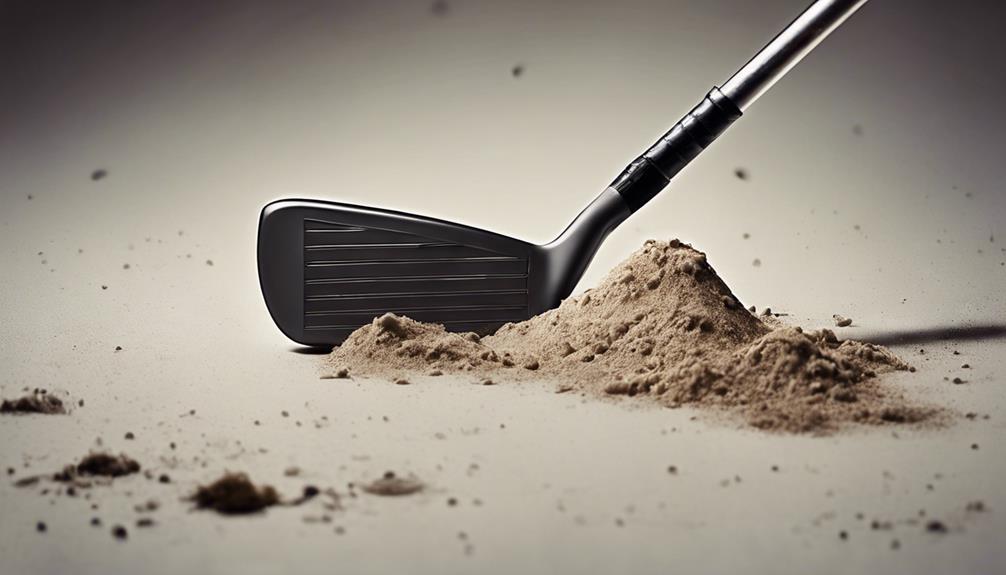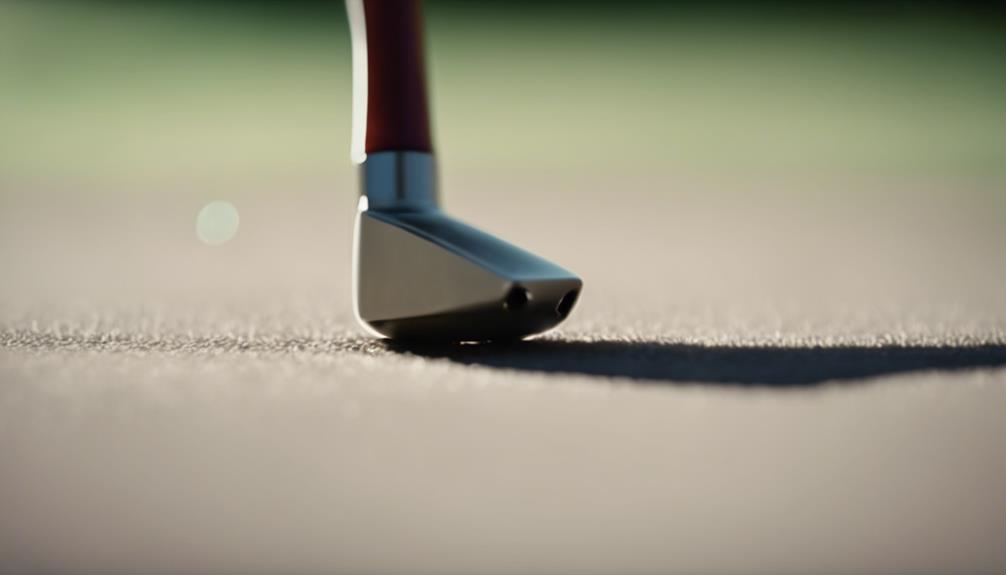- 7 Top Flite Golf Clubs XL for Improved Performance - September 28, 2024
- Top Flite Golf Clubs: Top 5 Reasons to Choose Them - September 28, 2024
- Top 3 Golf Club Fitters for a Perfect Swing - September 28, 2024
To replace a ferrule on your golf club in 5 easy steps, start by preparing your tools and materials, including a heat gun, hook knife, and new ferrule. Next, remove the old ferrule by softening the epoxy with a heat gun and carefully cutting it off. Then, clean and prepare the hosel by sanding and applying acetone. Install the new ferrule by applying epoxy and sliding it onto the shaft, ensuring a snug fit. Finally, secure the ferrule by allowing the epoxy to dry completely. By following these steps, you'll be well on your way to a professional-looking ferrule replacement – and there's more to learn about perfecting the process.
Key Takeaways
- Prepare the club by gathering necessary tools and materials, including heat gun, hook knife, sandpaper, acetone, epoxy, and ferrules.
- Remove the old ferrule by softening epoxy with a heat gun, cutting it off with a hook knife, and sanding the surface.
- Clean and prepare the hosel by removing dirt and old epoxy residue with acetone and lightly sanding for better epoxy adhesion.
- Install the new ferrule by applying epoxy, sliding it onto the club shaft, and using a heat gun to secure it in place.
- Ensure the epoxy dries completely to form a strong bond, and confirm proper alignment of the club head and ferrule.
Prepare Your Tools and Materials
Gather the necessary tools and materials, including a heat gun, hook knife, sandpaper, acetone, epoxy, and ferrules, to guarantee a smooth and successful ferrule replacement process. As you prepare for this DIY project, keep in mind that steel shafts are ideal for ferrule replacement since they can withstand the heat required for the process.
When selecting ferrules, consider buying split ferrules for an easier installation, although the finished appearance mightn't be perfect.
Investing in quality materials and tools will secure a professional-looking result. Don't opt for cheap club building options, as they might compromise the overall appearance of your golf club. Instead, spend time and money to get the desired look.
To further guide you through the process, watch instructional videos on platforms like YouTube, which provide step-by-step tutorials on ferrule replacement. With the right tools and materials, you'll be well-prepared to tackle this DIY project and achieve a flawless ferrule replacement.
Remove the Old Ferrule
With your tools and materials ready, apply heat to the old ferrule using a heat gun to soften the epoxy holding it in place, making it easier to remove. Hold the heat gun about 6 inches away from the ferrule and move it slowly back and forth to guarantee even heating.
Once the epoxy is soft, carefully cut the old ferrule off using a hook knife. Be cautious not to damage the club shaft during this process.
After removing the old ferrule, use a fine-grit sandpaper to sand down any remaining epoxy residue on the club shaft. This will ensure a smooth surface for the new ferrule.
Clean and Prepare the Hosel

Clean the hosel thoroughly with acetone to remove any dirt, debris, or old epoxy residue that might interfere with the new ferrule's adhesion. This step is essential, as any remaining residue can compromise the bond between the ferrule and the clubhead.
As one of our registered users viewing this guide, you understand the significance of a secure bond, especially when working with custom ferrules.
To guarantee a strong bond, follow these steps:
- Sand the hosel lightly with sandpaper to create a rough surface for better epoxy adhesion.
- Make sure the hosel is completely dry before proceeding to the next step to prevent any issues with adhesion.
- Properly cleaning and preparing the hosel is vital for a secure and long-lasting bond between the ferrule and the clubhead.
Taking time to clean and prepare the hosel will result in a professional-looking finish on the repaired club.
Install the New Ferrule
Take the new ferrule and apply a small amount of epoxy to its inner surface, guaranteeing a secure fit on the club shaft. This is especially crucial when working with Project X shafts, which require a precise fit to uphold their high-performance standards.
Next, slide the new ferrule onto the club shaft, making sure it aligns properly with the clubhead. Use a heat gun to warm the ferrule slightly, allowing it to expand and fit snugly onto the club shaft. This will establish a strong bond between the ferrule and the shaft.
As you install the ferrule, wipe off any excess epoxy that may have squeezed out during the process. Finally, allow the epoxy to fully cure before using the club to establish a strong and lasting bond.
Secure the Ferrule in Place

You'll need to warrant the ferrule adheres firmly to the club shaft by allowing the epoxy to dry completely and forming a strong bond. This step is essential to guarantee the ferrule stays in place, especially during swings. To achieve this, make sure the epoxy has fully dried according to the manufacturer's instructions.
Here are some key considerations to keep in mind:
- Confirm the new ferrule fits snugly on the club shaft before applying epoxy to secure it in place.
- Avoid inserting images or paste images on the ferrule, as this can compromise the bond.
- The club head should be aligned properly with the ferrule to prevent any misalignment issues.
- Double-check that the epoxy has dried completely before using the club to avoid any accidents or damage.
Frequently Asked Questions
How to Put a New Ferrule on a Golf Club?
When putting a new ferrule on a golf club, you'll guarantee proper ferrule maintenance by cleaning the hosel, applying epoxy, and aligning the ferrule, ultimately elevating your golf club repair and DIY customization skills.
How to Install a New Ferrule?
'Measure twice, cut once' is key when installing a new ferrule; you'll need a heat gun, hook knife, acetone, epoxy, and sandpaper. Guarantee a secure fit by cleaning the shaft, applying epoxy, and sliding the ferrule into position.
How to Remove a Golf Club Ferrule?
You'll master ferrule removal techniques by using a heat gun to soften epoxy, then twisting and pulling the ferrule off; next, you'll prepare for replacement with the right ferrule replacement tools and explore ferrule customization options.
Can You Replace Ferrules?
As you begin on this quest, you'll discover that, yes, you can replace ferrules, equipping yourself with specialized tools, and revealing benefits like enhanced aesthetics and improved club durability, while avoiding common mistakes like misaligned or oversized ferrules.
Conclusion
You've successfully replaced the ferrule on your golf club in 5 easy steps. Now, get back to improving your game!
Did you know that a study by the National Golf Foundation found that 60% of golfers upgrade their clubs within the first two years of playing?
You're likely part of this statistic, and with this new ferrule, you're ready to take your game to the next level.




